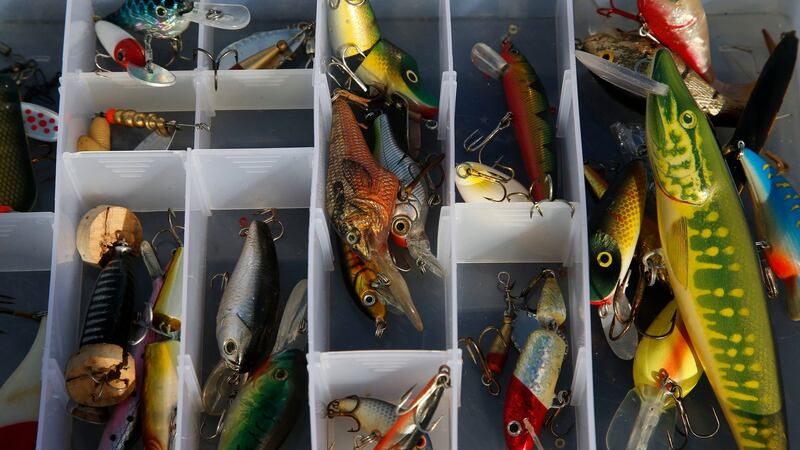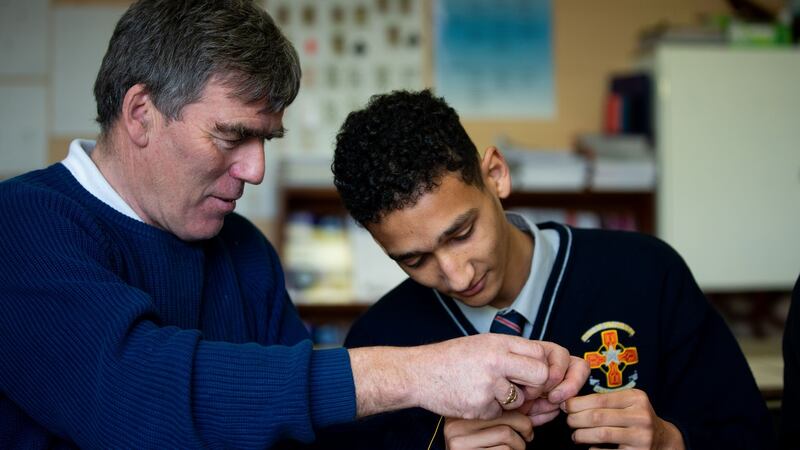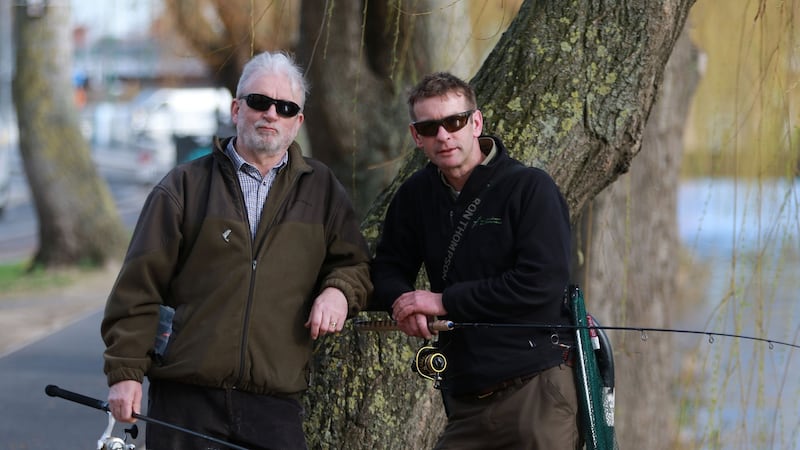The asphalt car park/school yard at CBS James Street doesn’t look like a good spot to learn about the natural world in any shape or form, much less about the hidden life of lakes, rivers and the sea. It’s tucked into the shamefully neglected area of Dublin’s inner city behind the Guinness Storehouse, where even the resilient buddleia on the adjacent derelict industrial sites look forlorn.
But anglers Ciarán Ward and Des Chew obviously believe you have to start where people are, and it seems that the school’s transition year students have no difficulty imagining they are already on the Wicklow beach where they will be fishing a few days later.
Ward is a past pupil of the school, and Chew works in outreach for Inland Fisheries Ireland, which supports the project. It was previously also supported by Eir, and is now seeking new sponsorship.
On the day I visit, Chew and Ward are assisted by another group of volunteer angling instructors from Wicklow, Fishing Futures.
Before the teenagers get to practise casting in the yard, they each have to assemble their own personal rig – the configuration of weights, hooks, beads and swivels and tiny bars – that will be attached to their fishing lines when they get to the sea.
It’s finicky work, and they do it with rapt fascination. “Have you ever heard a class as quiet as that?” one teacher asked another passing by.

Out in the yard, the casting sessions are exuberantly playful but also focused. The 4m-metre beach rods, properly handled, can send lines tipped with bright yellow tennis balls to the far end of the car park, an exercise complicated by overhanging lines.
The kids’ enthusiasm for the project is vocal. Several of them say they decided to do a transition year specifically because they had seen how much previous classes had enjoyed the angling course.
There are exceptions. One girl says she fears the sea, and seaweed, and the biting animals she senses might be in both. But she still seems to enjoy the camaraderie of the excursions. Several students mention how strong the social aspect is, getting out into hitherto unknown landscapes such as the Cavan and Monaghan lakes with their classmates.
But the most common word they use to describe the course is “relaxing”. Mohamed Eldib, who arrived here from Egypt only months ago, underlines this aspect: “When you’re fishing, you can’t be anxious, you can’t be nervous, you have to learn patience. Fish are everywhere, but you have to wait to find them.”
Class legend
The patience exhibited by his classmate, Mellissa Wilson, has already become legendary in the group. Both Chew and Ward comment on her “fierce determination” to catch a pike on a recent outing. After hours of waiting, she did.
Like Eldib and Wilson, Vincent Comerford says he is very keen to continue fishing beyond the course. “It’ll maybe be expensive, but it’ll be worth it,” says Comerford, who continues practising casting well after his mates have decided they’ve done enough.
“I’m really grateful for the opportunities to learn what spots are good, to visit lakes open to the public I didn’t know about, and especially to see fish up close and personal.”

He was particularly intrigued by catching a cross-breed – a hybrid between bream and roach – on one outing. This leads to a discussion of the fraught topic of native, naturalised and invasive fish species, and this in turn leads to talk of habitat conditions. Comerford has learned that the less well looked after riverside vegetation is, the better it may be for fish, plants, birds and animals. Perhaps our landscape managers, public and private, should take this course.
Chew and Ward root their instruction in the discovery of the connectivity between species. The students started off fly-fishing by sampling the invertebrates at the confluence of the Owendore and the Dodder. The insects they found there indicate where the best fish habitats are.
“Having learned what fish eat,” Ward says, “the students learned to imitate their prey, they tied their own flies. Then they used them to fish in the Avonmore at Annamoe, and they caught four trout.”
There are no trout streams within walking distance of the school. But Chew is on a mission to show me that “fish are catchable everywhere”. He and Ward take me up the road to the Grand Canal, beneath the Charlemount Luas stop, and hand me a rod.
Twig bothering
My first cast only catches a twig in the tree above me. Despite my embarrassment – and my casting does improve, slightly – it is extraordinary how fast I become oblivious to passers-by, who in any case are obviously used to seeing people fish there and even to the beer cans that pave the canal bottom.
Chew had scouted the area the previous day and, using Polaroid glasses, had spotted a large pike and several perch. Maybe I am casting too clumsily, maybe the day is too bright, but they aren’t biting for any of us. We do, however, encounter another angler, who claims to have caught 100 perch in 20 minutes right here, though on his last outing.
“Even if he’s exaggerating,” Ward says, “it shows how many fish are present in the canal.”
There are other canal presences, as well, which you would normally miss in the city’s roar and bustle. One south-facing bank is a blaze of coltsfoot, an exquisite dandelion lookalike that puts out its sun-styled flowers long before its leaves. Above our heads, a restless woodpigeon snaps off a large poplar twig, scattering its vivid purple catkins to our feet.
And then there is the dramatic moment when I briefly think a pony is galloping down the bank. But the sound comes from the wingtips of a swan, hammering the water as it struggles into lift-off, right before our eyes.
“Fishing is a great way to birdwatch,” Chew says over coffee later, reeling off a list of sightings most birders would envy: a peregrine stopping on its prey; a pair of kingfishers exchanging fish on the end of his rod.

Harming fish
Are they concerned about angling harming fish, whether in broad terms of conservation or of inflicting pain on another creature. They point out that most Irish fishing today is catch-and-return. They don’t entirely dismiss the pain argument, but it doesn’t trouble them, and in any case they believe the benefits of angling, to individuals and to conservation, outweighs any damage done.
Both men speak of the benefits of fishing as a form of mindfulness, long before anyone invented that term. They are particularly passionate about the need to involve young people. In our hectic and screen-addicted age, youth participation is plummeting.
And this concern that Irish angling may be ageing away is closely linked to their belief that there are no better custodians of our aquatic environment than those who fish in it. From deterring poachers to reporting invasive species and habitat destruction, they say, their sport and passion is an essential element in conservation.
Some animal rights advocates will disagree, but if fish could talk, maybe they would indeed be grateful to responsible anglers.
HOW TO GET HOOKED: SOME LINES TO YOUTH ANGLING GROUPS
Inland Fisheries Ireland provides several educational and outreach services at fisheriesireland.ie/Education-Outreach/dai.html, including:
Something Fishy (for primary schools): contact@fisheriesireland.ie
Dublin Angling Initiative: rory.keatinge@fisheriesireland.ie
Fishing Futures offers angling experiences to community groups and young people: prevention@wicklowtravellersgroup.ie
Des Chew can be reached about sponsorship for the CBS James St transition year angling programme: contact@fisheriesireland.ie
And fishing tackle shops across the country are usually great sources of information on local angling groups







